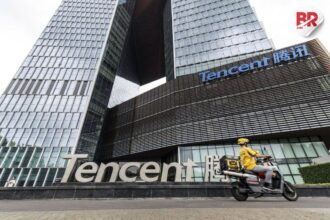
The Hidden Truth Behind Estee Lauder’s China Crisis
Estee Lauder, the global cosmetics giant, is now battling a legal storm in the US. Shareholders accuse the company of hiding its heavy reliance on China’s gray-market sales, leading to a shocking $8.7 billion loss in market value. But how did this happen?
What Went Wrong?
When the COVID-19 pandemic hit, Estee Lauder leaned heavily on China’s “daigou” market, where resellers buy duty-free products to sell at higher prices.

This boosted sales, especially in Hainan province. However, in January 2022, China cracked down on this gray market, causing sales to plummet.
Instead of being upfront, Estee Lauder allegedly blamed other factors and assured investors a recovery was coming. The truth only surfaced in November 2023, causing shares to drop 19% in a single day.
Also Read: Tesla’s European Sales Crash: Musk’s Politics & China’s Cheap EVs Blamed
The Lawsuit: What’s at Stake?
A federal judge in Manhattan ruled that Estee Lauder must face the lawsuit, stating the company misled shareholders by omitting key facts. Former CEO Fabrizio Freda and CFO Tracey Travis are also named in the case.
The lawsuit covers shareholders from February 2022 to October 2023, a period during which Estee Lauder’s stock lost nearly half its value. With China making up 25% of its sales, the fallout has been severe.
What’s Next for Estee Lauder?
The company denies wrongdoing, claiming no proof of fraud. But the judge wasn’t convinced, pointing out that executives should have known about the daigou crackdown’s impact.
This case serves as a warning: companies must be transparent, or they risk legal and financial disaster.
Also Read: From Fast-Fashion Star to Bankruptcy: What Happened to Forever 21?












